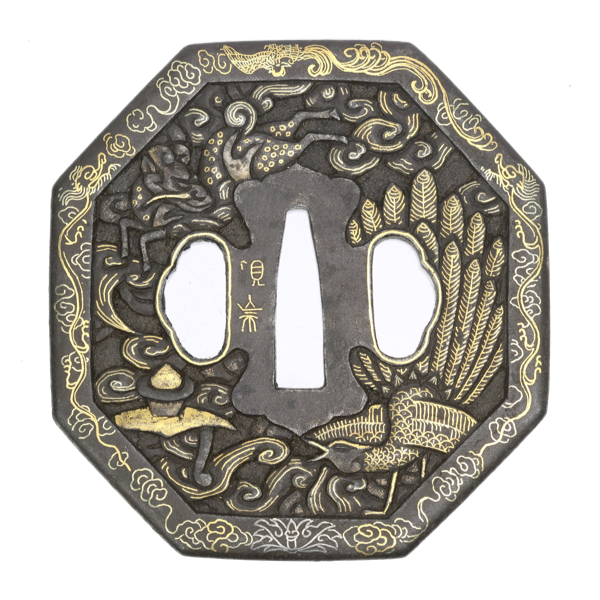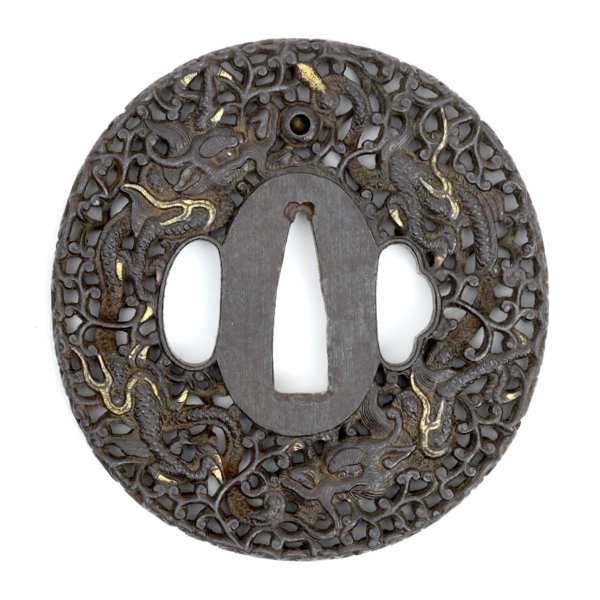
Yagami school nanban tsuba
The Yagami school were excellent carvers of iron, known for their 1000 monkey designs.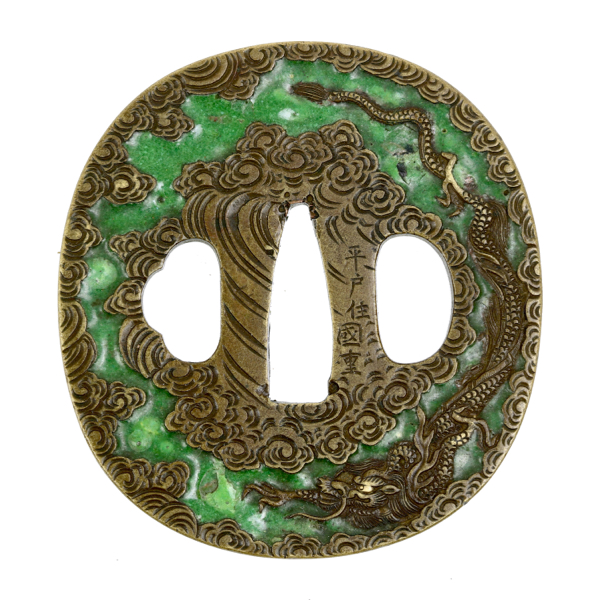
Enamelled Hirado Kunishige tsuba
Fine work and one of the very few enamelled tsuba by this maker.
Hirado Kunishige (平戸市國重)
A group of Japanese sword fitting makers working on the island of Hirado.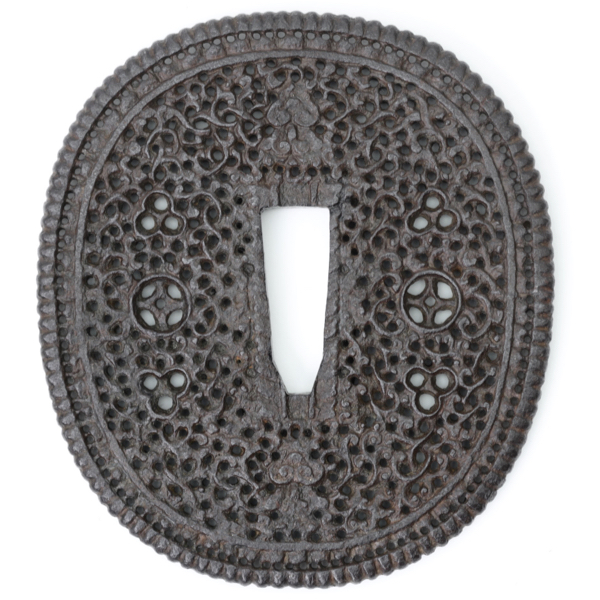
Yidao guard
Exceptionally large pierced iron guard for a Chinese yidao; "virtuous saber".
Three wise monkeys tsuba
Japanese sword guard depicting three wise monkeys conveying the message see no evil, hear no evil, speak no evil.
Koshirae (拵)
Japanese term for the mountings of an edged weapon.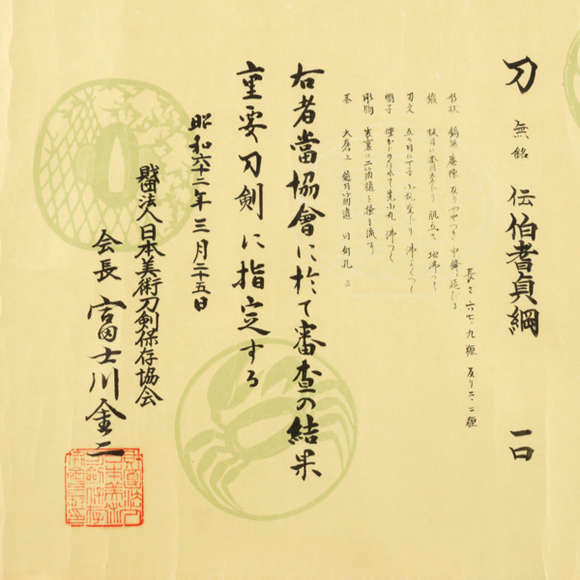
NBTHK Japanese sword papers
An introduction to NBTHK Japanese sword certifications and rankings.
Winged dragon tsuba
A fine and unusually large tsuba. Attributed to Hizen by the NBTHK.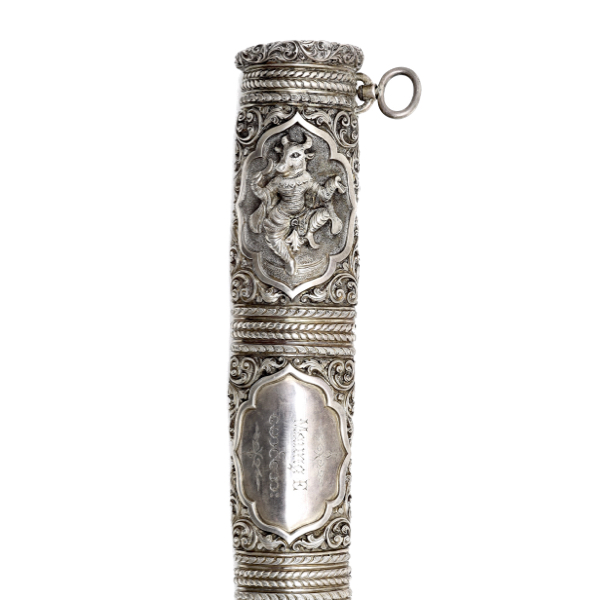
Fine Burmese silver sword scabbard
It represents the best of Burmese silversmithing with repousse work in high relief.
Fine Kinai dragon tsuba
Made by the Kinai group of Echizen, who originated as horimono carvers.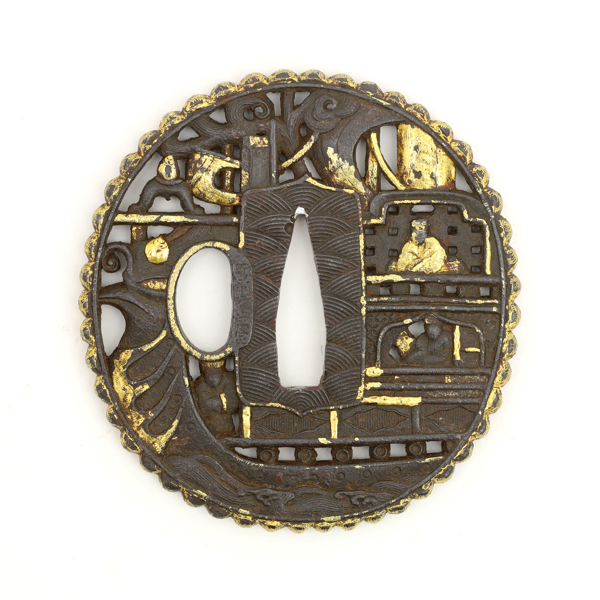
Signed nanban style ship tsuba
Signed by an artist named Kanesada from Higo.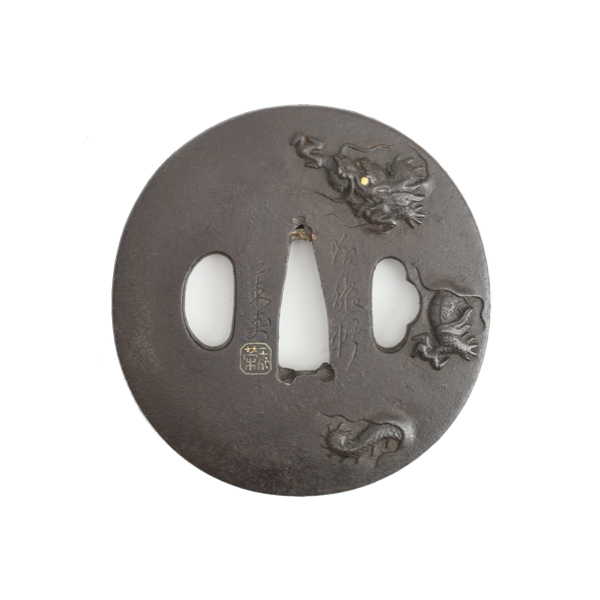
Seiryūken Eiju dragon tsuba
Tetsugendo school. Round plate with discoid cross-section, chiseled with dragons.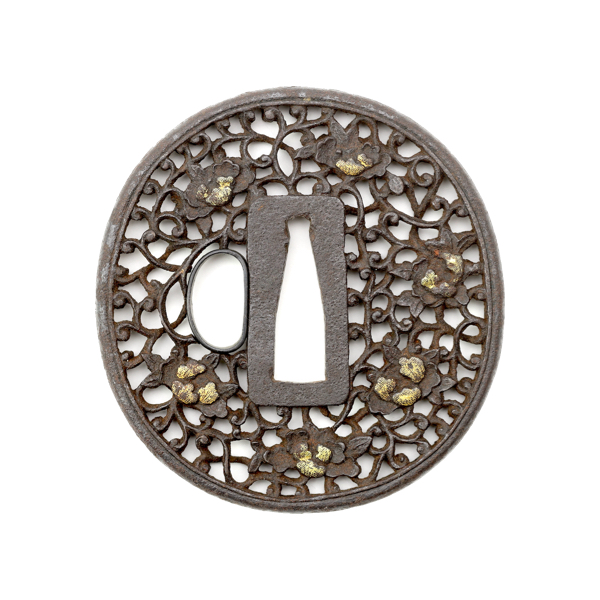
Peony karakusa tsuba
Executed in "nanban style" openwork with chiseled and gold-encrusted peonies.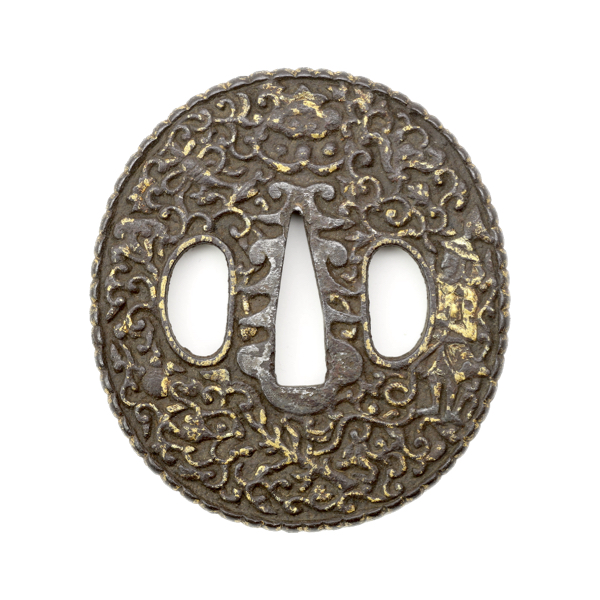
Sawasa style iron guard
Unusual piece with depiction of a foreign figure.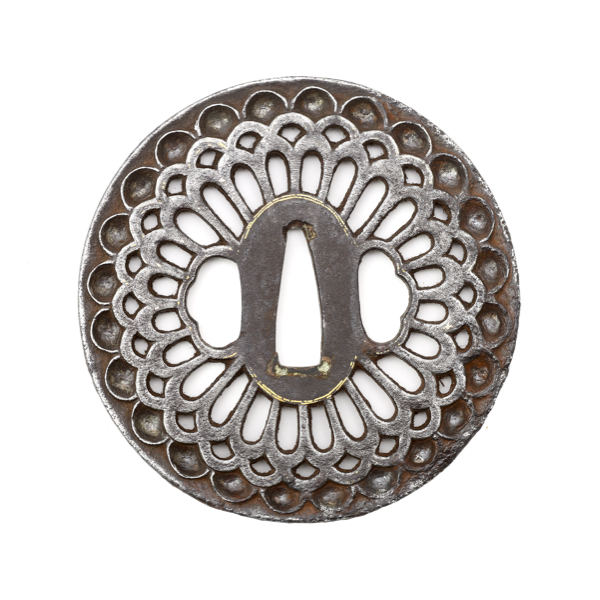
Iron chrysanthemum tsuba
Large example with gold and silver overlay.
Unusual dragon gate guard
Asian sword guard of unknown origin, modified in Japan.
Japanese tsuba in Canton style
Also known as Kwanto-gata, with two facing dragon chasing a pearl.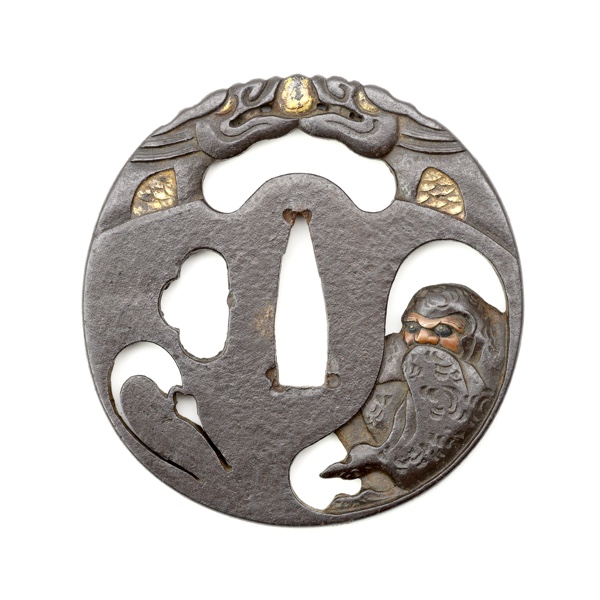
Daruma tsuba
A peculiar tsuba with a depiction of Bodhidharma and two dragon chasing a pearl.
Wan-gata tsuba by Kunihiro
Its outer surface is decorated with interlocking swastikas and family crests.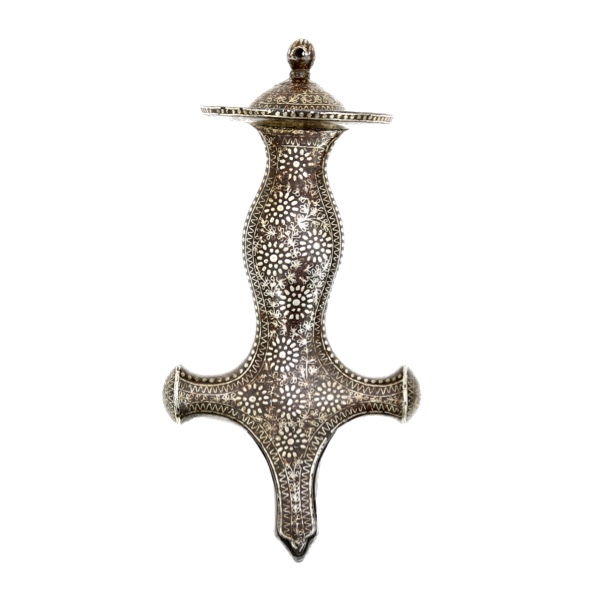
Silver overlaid talwar hilt
Never mounted, still with the shop's wooden stopper.
Rooster fight kozuka
Executed in gold and silver on a shakudō nanako base, with golden back.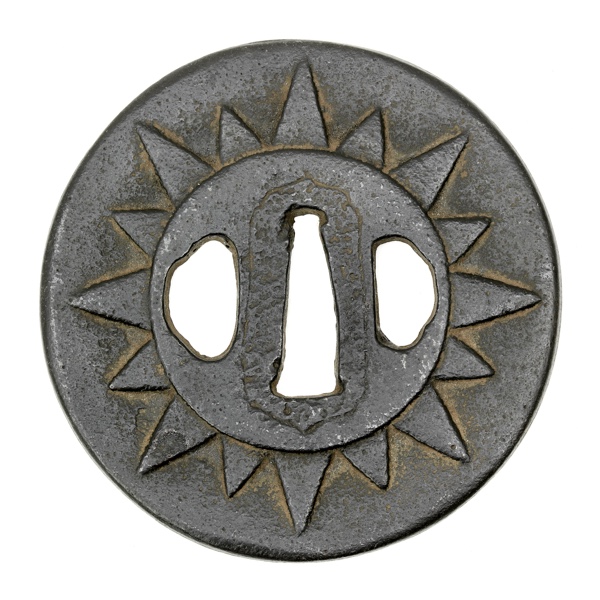
Cast iron compass rose guard
A peculiar cast iron sword guard, probably from the South China Seas area.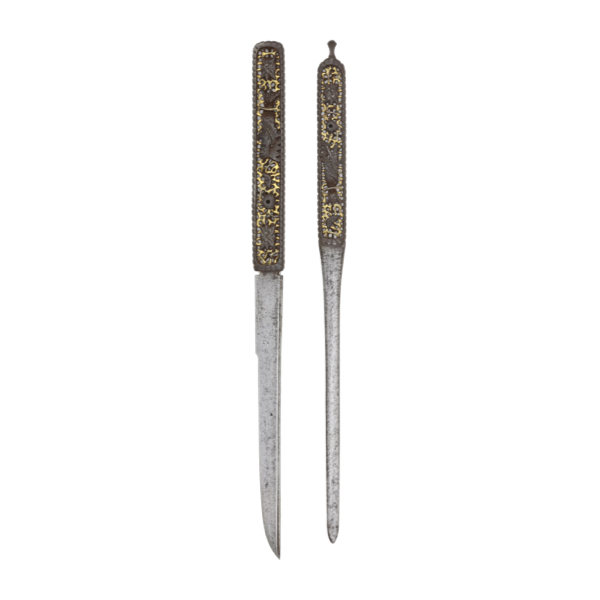
Nanban kogai & kozuka set (futakoromono)
The only set of its type known to me in both private and museum collections.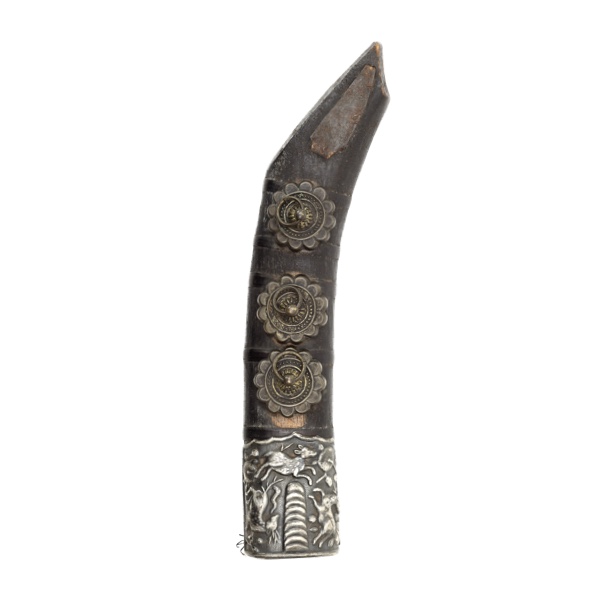
Ainu sword hilt
Made of wood, with a silver ornamental fitting of remarkable workmanship.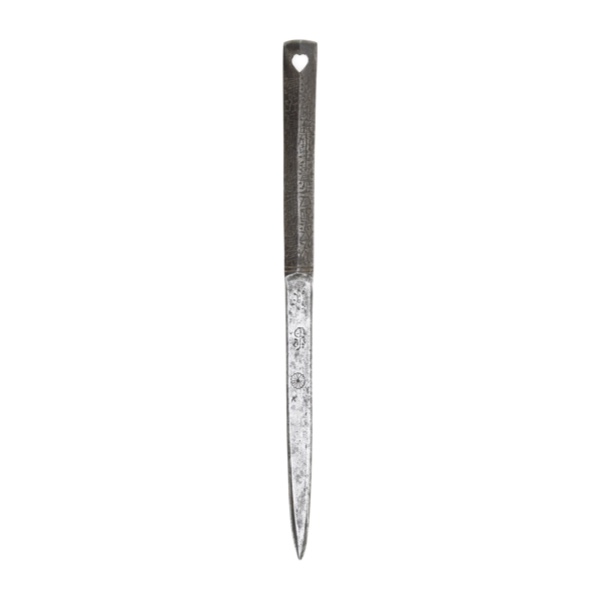
Kankyûtô (貫級刀/貫首刀)
Japanese word for a samurai tool.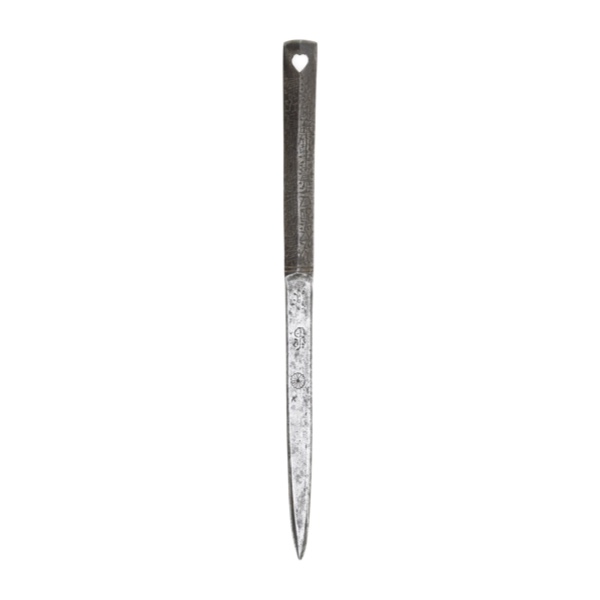
An Edo period kankyûtô
A double-edged samurai tool with morbid origins.
Kozuka (小柄)
Japanese name of a small utility knife worn in sword and dagger scabbards.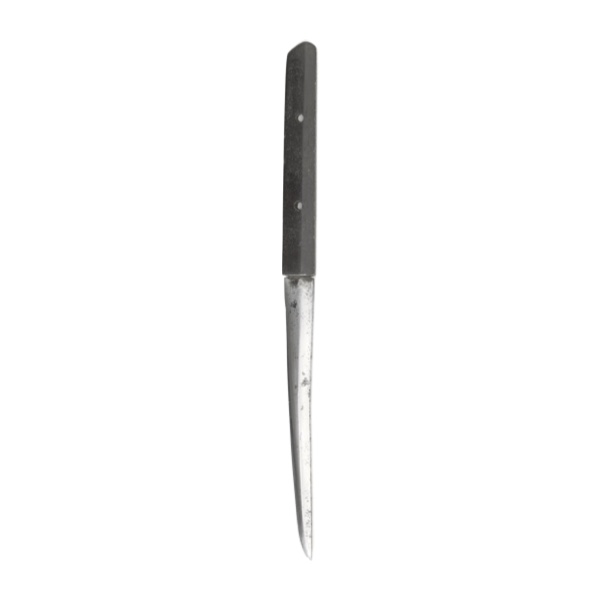
Signed nakago kozuka
A by-knife for a Japanese sword, with a hilt shaped like a sword tang.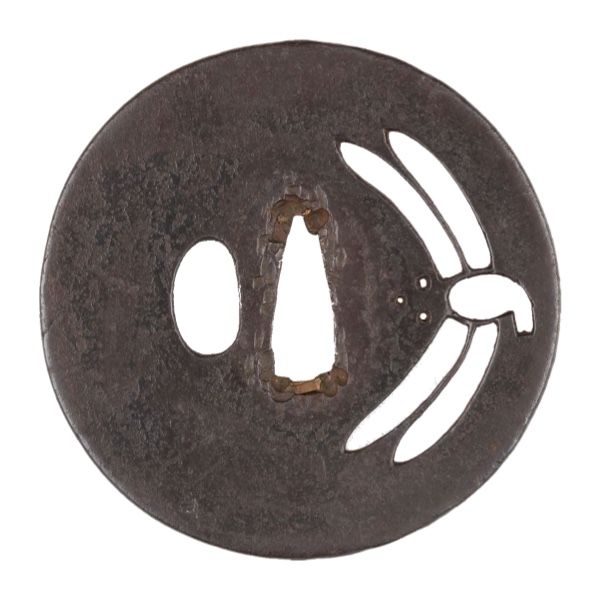
Tsuba (鍔 / 鐔)
Japanese name for a sword guard.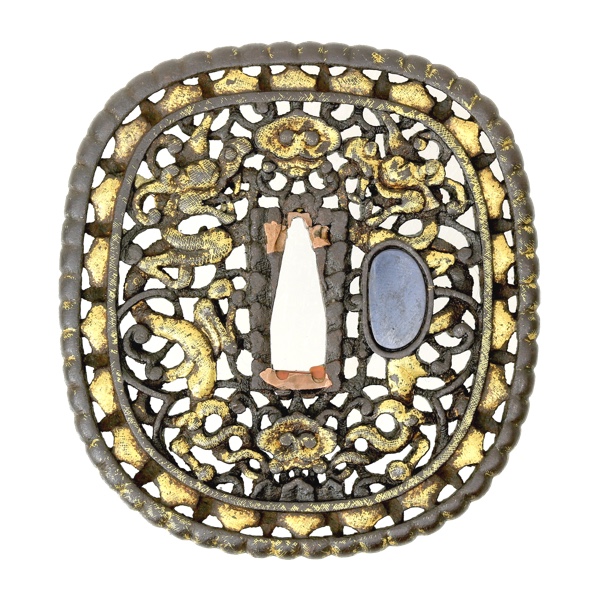
Chinese lòukōng sword guard
The archetypical Chinese sword guard that gave rise to the Japanese genre of "nanban tsuba".
Hūshǒu (護手)
Chinese for the handguard of a weapon.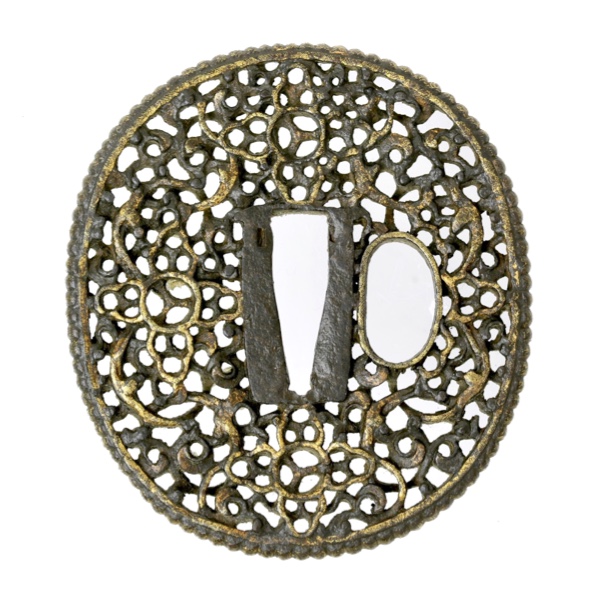
Qing openwork saber guard
A very rare Chinese saber guard dating from the height of the Qing dynasty.
Chinese hùshǒu with lantsa script
A Chinese sword guard from the 18th century with a Buddhist mantra in lantsa script.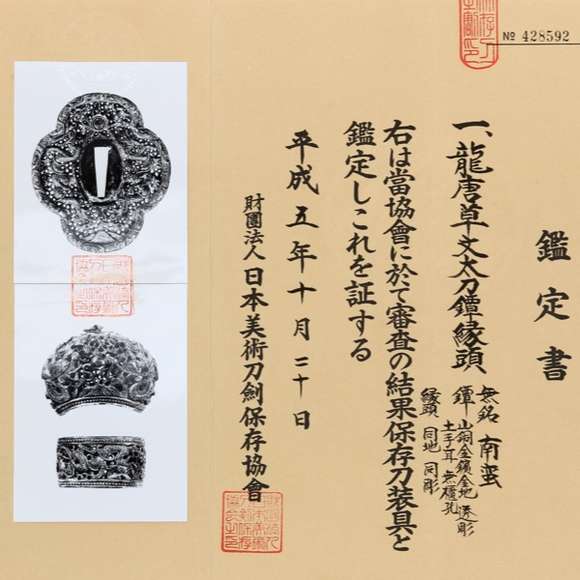
Chinese sword guards in Japan
The Chinese saber guard is called dāo hūshǒu (刀護手), or hùshǒu pán (護手盤) in Chinese. This literally translates to "saber handguard" or "disc handguard". At some point, the Japanese got quite a taste for them. Over the years a number of them have turned up from Japanese sources that exhibit alterations that indicate they were used by Japanese on their swords.
Early chilanum hilt
An old bronze hilt in the shape of chilanum hilts.
Kōgai (笄)
The Japanese term for a hair arranging pin that was worn in Japanese sword scabbards.
Wari-kōgai (割笄)
The Japanese term for a hair arranging needle that can be split to form a pair of chopsticks.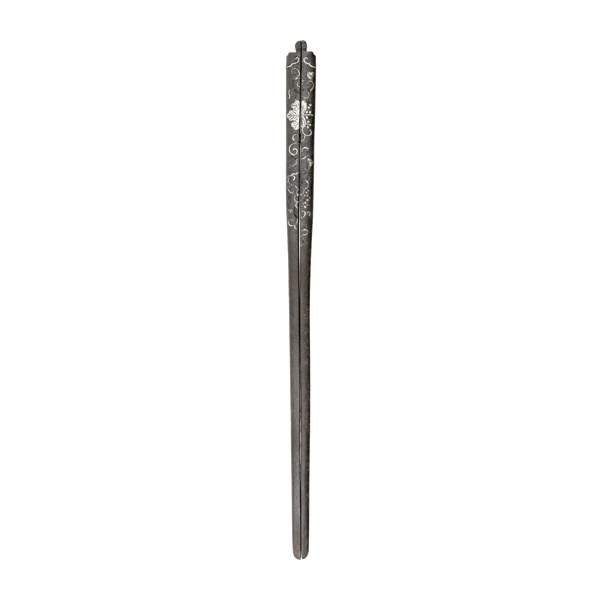
A Japanese wari-kōgai
Iron chopsticks that combine as a kogai, with silver inlaid Paulownia mon.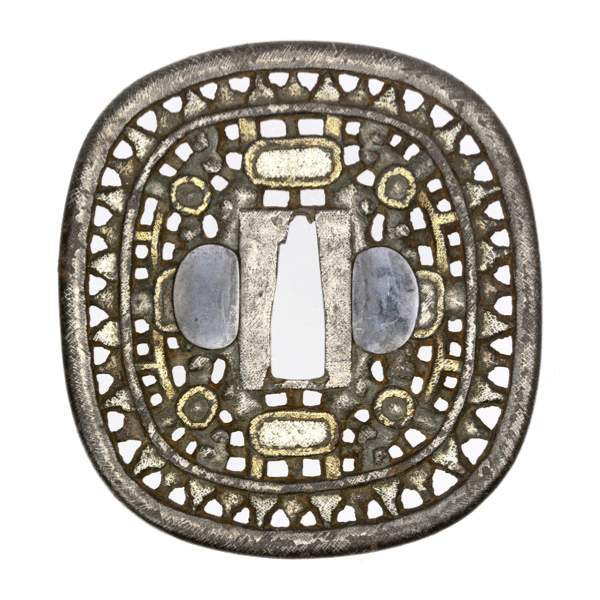
"South China Sea Guard"
Most likely used by the multi-cultural crews of pirate fleets that roamed the South China seas.
Tachi-mokkō-gata (太刀木瓜形)
Japanese term for a cross-shaped tsuba often used on tachi swords.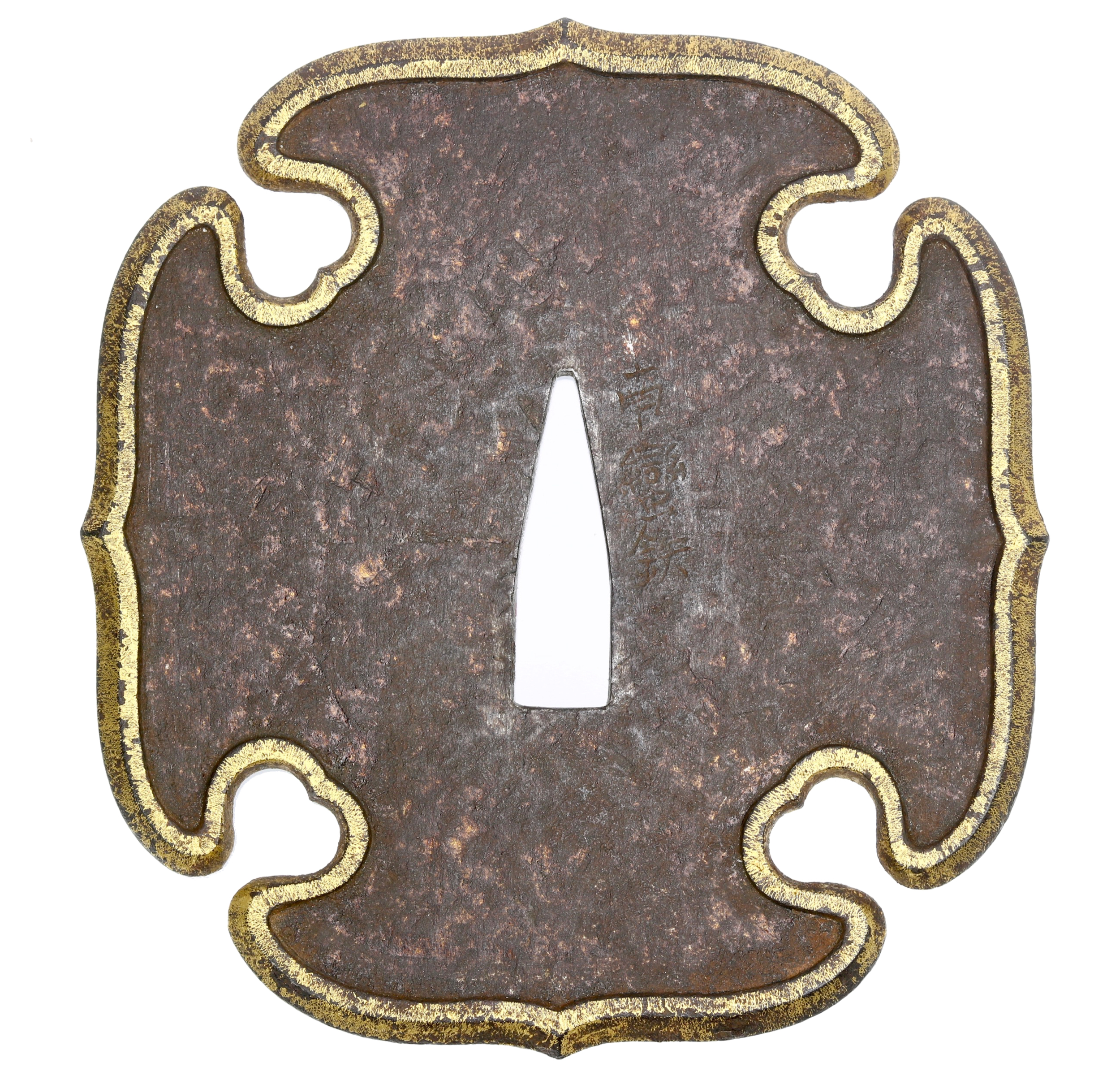
Aoi-gata (葵形)
Japanese word for a sword guard shape. Literelly "hollyhock shape".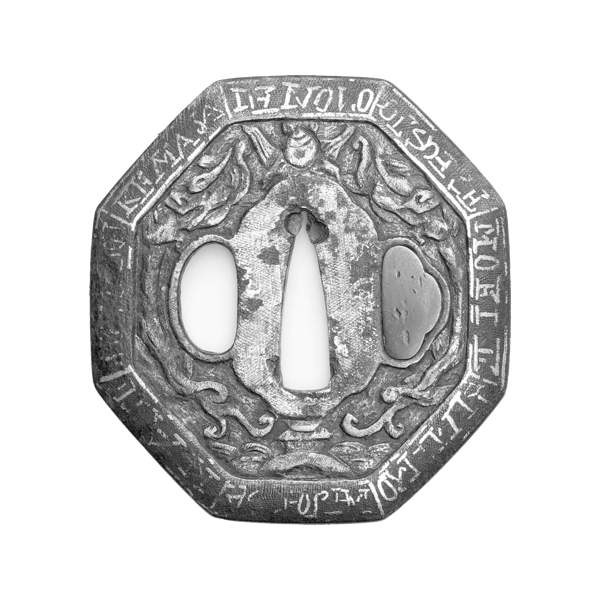
Kiyou-Toujin Tsuba
A Japanese style sword guard made in 17th century Nagasaki Chinatown.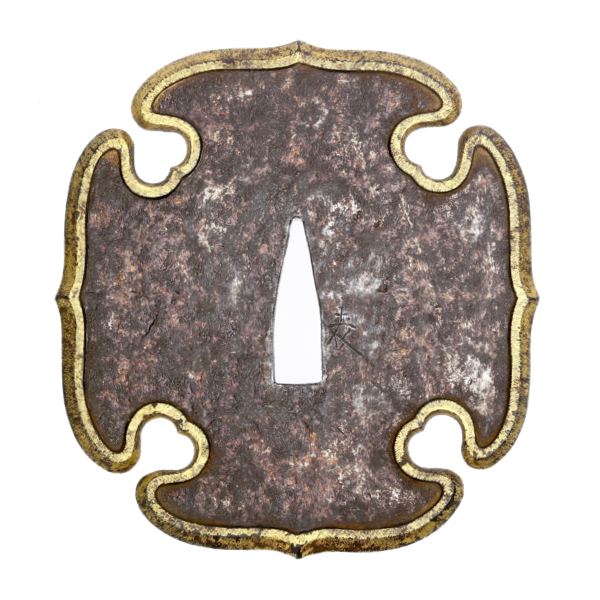
Tachi tsuba of nanban tetsu
A rare 17th-century sword guard made of foreign steel.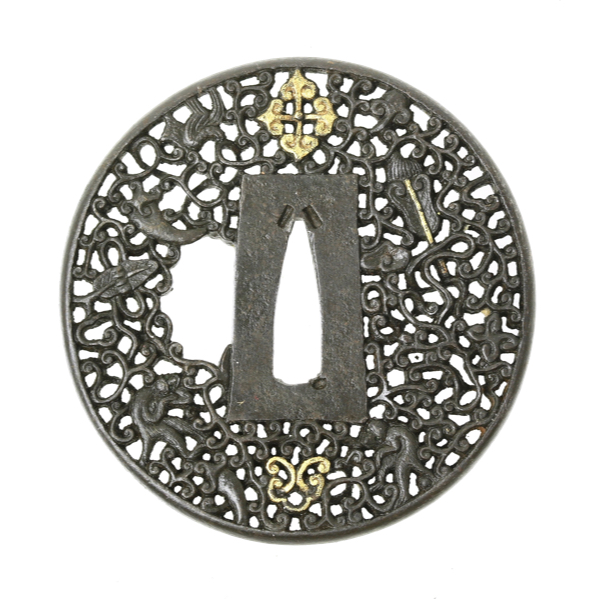
House of Aviz tsuba
A Japanese sword guard with the cross of the House of Aviz.
Hisayuki (久隨)
A Japanese maker of sword mounts, active in the Edo period.
Alluva
Sinhala for side plates on a sword.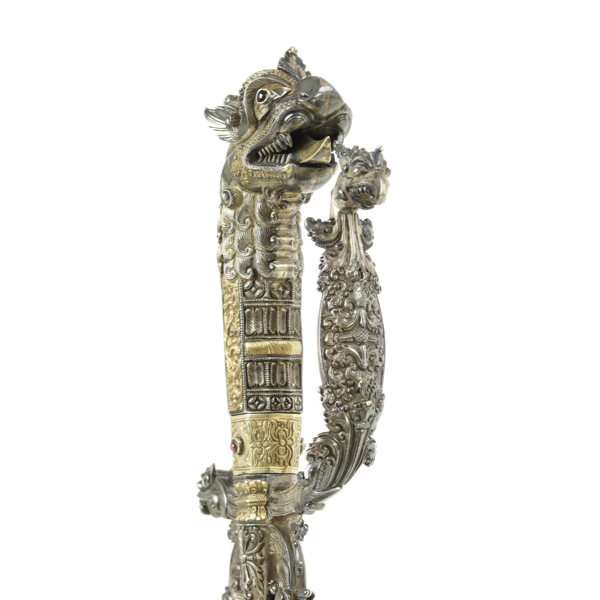
Ath häde
Sinhala for "knuckle guard".
Ath väsma
Sinhala term given by Deraniyagala for "knuckle guard".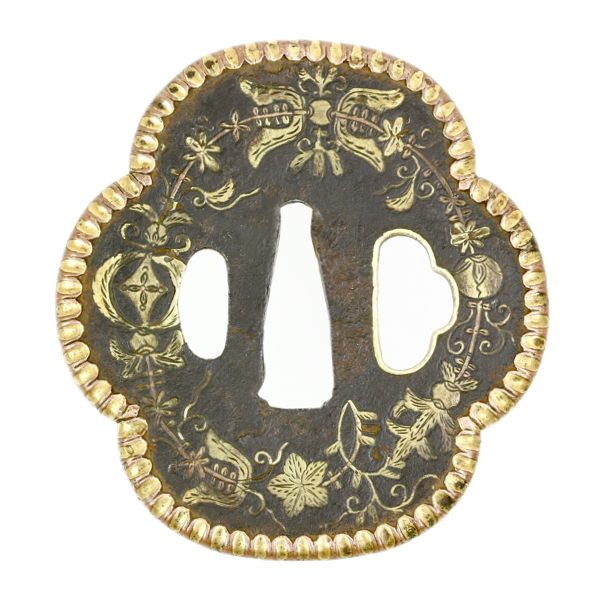
A Korean sword guard
Adjusted for use on a Japanese sword.